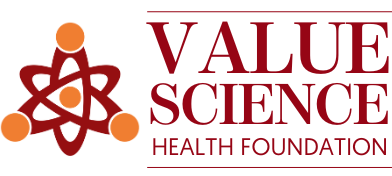Introduction
Chronic Kidney Disease (CKD) presents a spectrum of abnormalities in kidney structure and function that persist for three months or more. The diagnosis of CKD is based on two main criteria: a Glomerular Filtration Rate (GFR) of 60 ml/min or less per 1.73 m2, indicating reduced kidney function, and evidence of kidney damage, often assessed through elevated urine albumin or protein to creatinine ratio (ACR) exceeding 30 mg/g. The most reliable measure of renal function in healthcare sector is GFR.
The Burden of CKD and ESRD in Sub-Saharan Africa
The progression of CKD can lead to irreversible End-Stage Renal Disease (ESRD), a significant public health concern in Sub-Saharan Africa. Reliable health information systems are lacking, so the exact prevalence of ESRD in the region remains unclear. Data from 13 Sub-Saharan countries provides an estimated overall CKD prevalence of 13.9%. ESRD requires renal replacement therapy, which is a life-sustaining treatment. This can be either dialysis or kidney transplantation. Both options are costly and present a significant financial burden in Sub-Saharan Africa.
The Burden of Disease and Economic Impact of CKD and ESRD
The term “burden of disease” encompasses a variety of factors that impact individual and community health. These factors include the direct medical costs associated with investigations, management, and treatments. Such costs may cover imaging, lab tests, medications, surgical procedures like fistulas, and dialysis. Patients and caregivers often shoulder non-medical costs, such as transportation and food, along with other expenses related to the disease. The burden of disease also includes indirect costs, such as lost productivity or missed work days due to illness. Furthermore, CKD and ESRD result in substantial productivity losses for patients and their caregivers due to absenteeism, presentism, and premature death. The progression and the growing prevalence of chronic kidney disease raise concerns about our capacity to manage its economic burden on patients, caregivers, and society.
The Importance of Cost Analysis in Healthcare
Cost analysis plays a crucial role in decision-making within the healthcare sector. Understanding the definitions, categories, and research methods related to the Cost of Illness (COI) is essential for a thorough cost analysis. Accurate data on illness costs allows policymakers to design, prioritise, and allocate healthcare services and resources. This allocation respects budgetary constraints, optimises public health, and promotes economic efficiency.
The Direct and Indirect Cost of ESRD in Khartoum
Based on the patient’s perspectives, a recent study aimed to estimate direct and morbidity indirect costs (loss of productivity) of ESRD in Khartoum state (the capital of Sudan) using an adapted standardised cost of illness tool and to investigate the factors that may affect the cost of illness. In Sudan, ESRD presents a significant economic challenge. Due to health system issues, government hospitals and clinics in Sudan rarely offer public health services. On top of that, many essential drugs for those individuals are not available in government pharmacies where health insurance pays 75% of medication costs. Patients must seek treatment at private centers and buy prescriptions from private pharmacies.
Economic Burden of End-Stage Renal Disease in Sudan
The study found that patients and caregivers lost an average of 54.1 and 33.4 work days, respectively. This resulted in an average annual indirect cost of 7,634.8 SDGs ($340.8 PPP) for patients, 1,289.9 SDGs ($57.6 PPP) for caregivers, and 8,740 SDGs ($390.2 PPP) for total indirect costs. The fact that caregivers who are unemployed or earn less often accompany patients during clinical visits or hospital admissions may contribute to the variability of indirect costs between caregivers and patients.
Furthermore, the study revealed that the average direct cost of ESRD is 586,315 SDGs ($26,174.8 PPP) per year, with a median of 38,600 SDGs ($1,723.2 PPP) for medical and non-medical expenses. These high out-of-pocket expenses can lead to catastrophic health expenditures for households. This highlights the need for strengthening the health finance system, expanding health insurance coverage, and promoting research to address the economic burden and improve the quality of life of ESRD patients.
Conclusion
Findings show that ESRD incurs high direct expenses. It also results in significant productivity losses for patients and their households. These factors contribute to substantial indirect costs. To address ESRD’s economic burden, we need a comprehensive approach. This approach should include policy reform, stronger healthcare systems, and active community engagement. Sub-Saharan Africa can improve ESRD patient outcomes through preventive healthcare, better insurance coverage, and access to affordable treatments. This approach will lessen the disease’s overall economic impact.




